The Bowline Knot
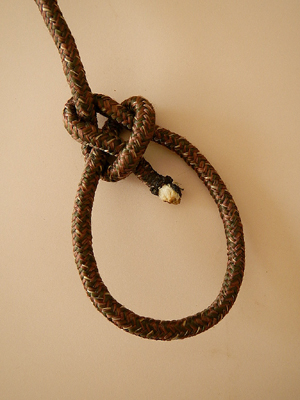
Bowline Knot: Step by Step
The bowline knot is one of the few essential knots to know for wilderness survival, rescue, and maritime applications. The strength of this knot is unparalleled. It is at least centuries old. The first documentation of the bowline was found in John Smith’s 17th century journals. He claimed that the sails of his ship would break before the knot came undone. There is also rumor of the knot being used in ancient Egypt.
The bowline is used to create a fixed loop at the end of a rope or line. A fixed loop will not increase or decrease in size with tension or slack applied to the line. Rope may be passed around or through an object in the tying of the knot. A rope will retain 60-70% of its strength at the location of the bowline.
This knot is used for setting up a tarp shelter, tying a string to the bow of a bow-drill fire making kit, attaching a string to an archery bow, rescuing a person from water or a crevasse, tying up a bear bag, or any other “loopy” application.
There is a story that is told when tying the knot which helps a lot of people remember it. It goes a little something like this:
1) “The rabbit comes out of his hole.” The hole is a loop that must be created as an overhand loop, which is made by crossing the short end of the line ABOVE the standing part. The standing part of a rope is the longer length. The rabbit is the short end, which is the short part of the rope that is used to tie the knot.
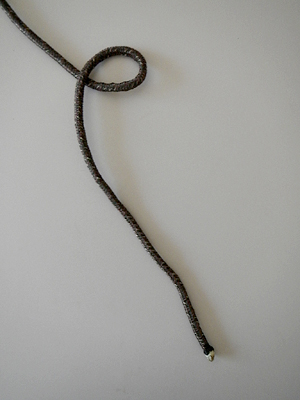
This "hole" is NOT the loop that will be in the line at the end of the tying process. The loop that WILL be in the line is made by the short end moving through the overhand loop.
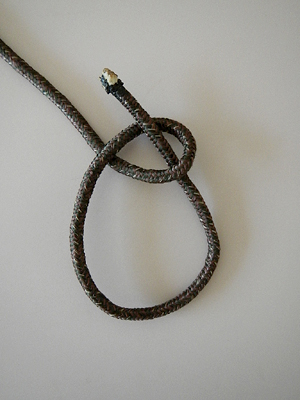
2) “The rabbit runs around the tree.” Remember, a tree grows up from its roots, which are underground. (This reinforces the overhand loop.) In other words, the short end runs around the standing part.
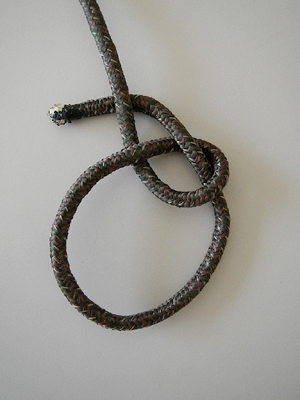
3) “The rabbit runs back down his hole.” The short end (rabbit) parallels itself as it passes back down the hole, but does not cross itself.

4) “The rabbit stops to watch the tree grow.” Pinch the short ends and pull the standing part to tighten the knot. The original overhand loop created in step 1 should cinch down on the rabbit. The knot is now complete!
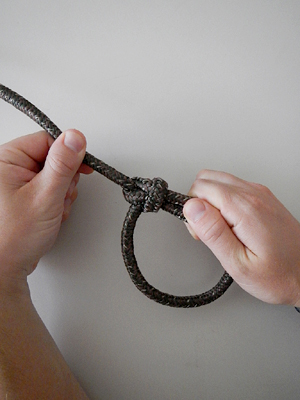
I recommend tying this knot at least one hundred times in a row. That way it will be tied into the memory banks and can be called upon when needed. After one hundred ties, try tying it with one hand. Once the one handed bowline is mastered, tie it with one hand IN THE DARK! If that is too easy, tie it one handed, in the dark, while hanging upside down from a rope (with a bowline knot tied around your feet, of course.)
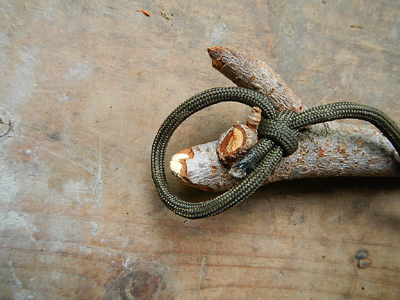
Be More Prepared For Your Next Outdoor Adventure!

Don't leave home without knowing these six essential survival skills. Our free survival mini guide reveals the strategies of:
- Shelter & fire to prevent the number one cause of death
- Obtaining clean water to avoid life-threatening dehydration
- Common wild survival foods and other critical skills!

The other essential survival and rescue knots that I recommend learning,
and learning well, are the square knot (a.k.a. reef knot), taut line hitch, clove hitch, timber hitch
and bowline on a bight. A knot tied improperly can be fatal, but after
reading this article (and spending some time tying knots) you will have the knowledge and skill to save a
life.
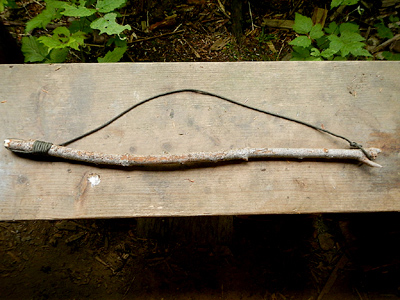
bowline on the bow string of a bow-drill fire making kit
Watch our step-by-step bowline knot video:
By the way, if you enjoyed this article then you'll love our survival mini guide. You'll discover six key strategies to staying alive in the outdoors plus often-overlooked survival tips. We're currently giving away free copies here.
Further Resources:
Related Courses:
Wilderness Survival Courses at Alderleaf Wilderness College

About the Author: Steve Nicolini is an experienced permaculturist and wilderness skills instructor. He taught at Alderleaf for a number of years. Learn more about Steve Nicolini.
Return from The Bowline Knot back to Wilderness Survival Articles
Is The Essential Wilderness Survival Skills Course Right for You? Take the "Online Survival Training Readiness" Quiz
See for yourself if this eye-opening course is a good fit for you. It takes just a few minutes! Get your Survival Training Readiness Score Now!

Grow Your Outdoor Skills! Get monthly updates on new wilderness skills, upcoming courses, and special opportunities. Join the free Alderleaf eNews and as a welcome gift you'll get a copy of our Mini Survival Guide.

 The Six Keys to Survival: Get a free copy of our survival mini-guide and monthly tips!
The Six Keys to Survival: Get a free copy of our survival mini-guide and monthly tips!
Learn more